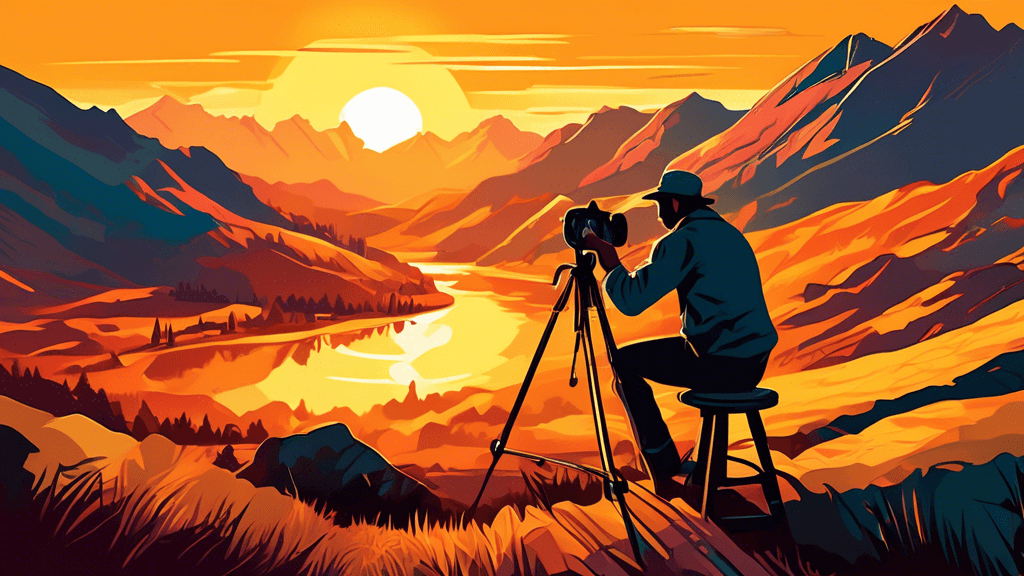
Mastering Natural Light: Tips for Enhancing Your Landscape Photography
Share
Understanding the Power of Natural Light in Landscape Photography
Have you ever wondered what elevates a good landscape photograph to a great one? The secret often lies in the mastery of natural light. Natural light can transform an ordinary scene into a breathtaking display of colors, contrasts, and shadows, capturing the grandeur of nature in a way that few other elements can. But how can photographers harness this powerful tool?
The Golden and Blue Hours
The quality of natural light varies significantly depending on the time of day. Perhaps the most widely revered times are the 'golden hour' and the 'blue hour.' The golden hour—occurring shortly after sunrise and just before sunset—bathes the landscape in warm, soft light, reducing the intensity of shadows and enhancing the hues of the scene. Conversely, the blue hour—found during twilight, when the sun is below the horizon—casts a serene blue hue over the landscape, offering a mystical, calm quality that is dramatically different from the vibrancy of the golden hour.
Tip: To make the most of these magical hours, plan your shoot around the sun's position. Apps like Golden Hour Calculator and Sun Surveyor can help!
Using Weather to Your Advantage
Weather conditions can greatly affect landscape photography. Many photographers avoid overcast days, yet, these days offer diffused light which minimizes harsh shadows and highlights, revealing the subtle details and textures of the landscape. Alternatively, the dramatic lighting conditions that arise before or after a storm can yield stunning, expressive photographs full of drama and contrast.
Quote: Bad weather makes for good photography,—Ansel Adams, noted landscape photographer and environmentalist. This insight reminds us that the most challenging lighting conditions often result in the most compelling images.
Direction and Quality of Light
The direction from which light hits the landscape changes its character. Side lighting, occurring when the sun is at a low angle to the side, emphasizes textures and contours within the landscape. Backlighting, where the light source is directly behind the subject, can create striking silhouettes or a halo effect around subjects like trees or mountains.
Considering the quality of light is also crucial. Hard light, direct and intense, can define shapes and patterns but can also cause strong contrasts and deep shadows. In contrast, soft light, often found on cloudy days or in shaded areas, softens colors and reduces contrast, making it ideal for highlighting details and colors evenly.
Tip: Experiment with different times and types of natural light to see how each affects your specific subject matter. Note the feelings they evoke and the stories they tell.
Integrating Light into the Composition of Landscape Photos
Understanding where and how to incorporate light into your composition can tremendously impact the resulting image. Light can lead the viewer’s eye through the photograph, create depth, or emphasize particular aspects of the scene. For instance, using leading lines—like a river or pathway lit by a setting sun—can guide the viewer through the image, while spotlighting can highlight a focal point within a vast landscape.
Always consider the interplay of light and shadow in your composition, as this balance can greatly affect the mood and visual impact of your photograph.
Adapting to Changing Light Conditions
Landscape photography often requires adaptability. Light conditions can change unpredictably, especially in volatile weather. Being prepared and flexible allows you to capture the best possible images even when conditions aren’t ideal.
Tip: Always carry neutral density filters and polarizers. These tools help manage difficult lighting situations and can enhance the visual quality of light in your photographs.
Concluding Thoughts
Mastering natural light in landscape photography is both an art and a science. It demands patience, planning, and a deep understanding of how light interacts with the landscape. By embracing the variability of natural light and using it creatively, you can dramatically enhance your landscape photographs.
Are you ready to transform your photograper approach with the magic of natural light? Venture out during different times of day, experiment with weather conditions, and integrate diverse lighting into your compositions. Let the beauty of natural light inspire your next photographic masterpiece.





